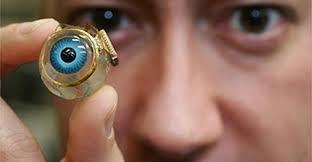Global rate of blindness is nearly 40 million whereas more or less 125 million suffer from low vision. It isn’t surprising of researchers in the ocular industry to develop new ways of vision restoration and among the many successful solutions; bionic eye implants lead the way while raising hope among the blind. Scientists engaged with development and modification of the bionic eyes agrees to a common goal which is making technology as useful as that of cochlear implants for auditory impairment.
More than meets the ‘prosthetic eyes’
It’s worth noting that bionic eyes aren’t the same as prosthetic also known as “glass eyes” which alters the very appearance and physical structure of an eye to be removed following pain, trauma, disease or any disfigurement. Bionic eye implants function within the existing eye structures or brain sensory area that links to our ability of seeing. These are designed for optimum functionality of vision unlike the cosmetic or physical counterparts.
When blindness is concerned, a single cause and cure isn’t concerned but many different reasons are associated to both loss and restoration of the vision; be it temporary or permanent. Different models of bionic eyes are aimed at targeting various areas of the visual pathway. Currently, implants for retinal detachment treatment and likewise procedures are approved by the FDA and commercially available.
Cataract surgery and corneal transplant however can replace the eye lens and cornea itself if the structure disrupts proper flow of the light or rendering the cornea clouded.
Potential specimen for bionic eyes
Citing an example of the United States where FDA has approved only a single commercially available system or process of the bionic eye. The device is known as the Argus II Retinal Prosthesis System that has been introduced by a Californian company. This Argus II has successfully restored a certain level of visual perception among individuals suffering from severe retinitis pigmentosa. Yet another good use of the system is among the people facing more common eye-related condition known as Age-Related Macular Degeneration (ARMD).
Sight restoration process
Argus II is a bipartite/two-part system which includes a tiny camera mounted on a pair of eyeglasses with a network of electrodes surgically implanted on the eye’s rear area that is on the retina. The camera converts images into signals that are wirelessly transmitted to the surgically implanted retina. As a result, retinal cells are stimulated by the chip’s electrodes which then transmit the incoming data to the optic nerve which is then processed by the brain.
A certain limitations
Although, Argus II system allows discerning of the light, objects and movements, it’s incapable to restore vision to a 100% as some might hope. The drawback is due to limited number of electrodes that are more or less 60 whereas natural vision can be achieved with approximately a million. On the contrary, people who’ve had or expecting retinal detachment treatment can definitely benefit from Argus II which allows clear fonts and reading of printed books, helps in crossing the road and other such tasks. Future models are underway promising near 100% vision restoration.
Conclusion
Bionic eye implants, like other prosthetics are only suggested by a doctor following severity of the onset and patient’s ability to accept the transplant. For this, consultation and detailed check-up with an expert ophthalmologist is crucial.












No Comments